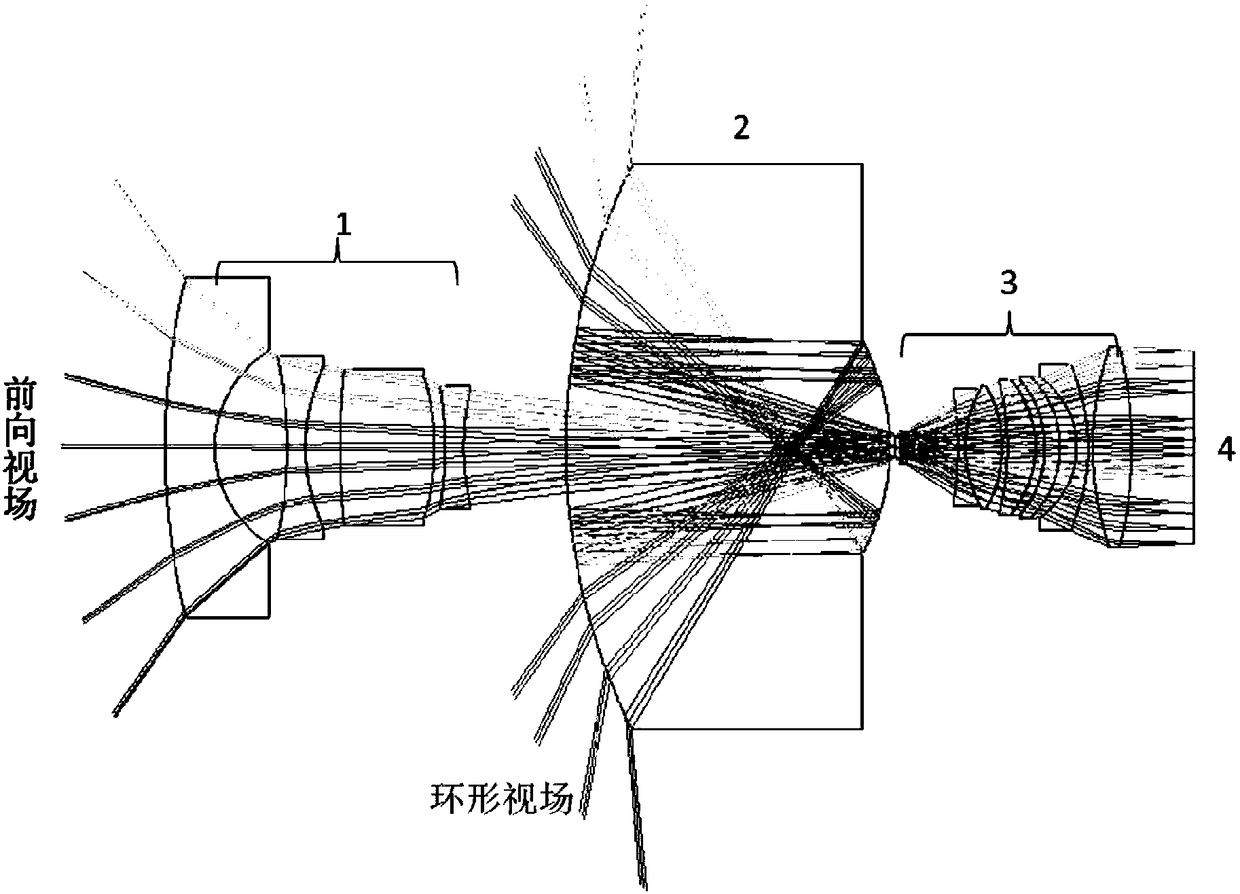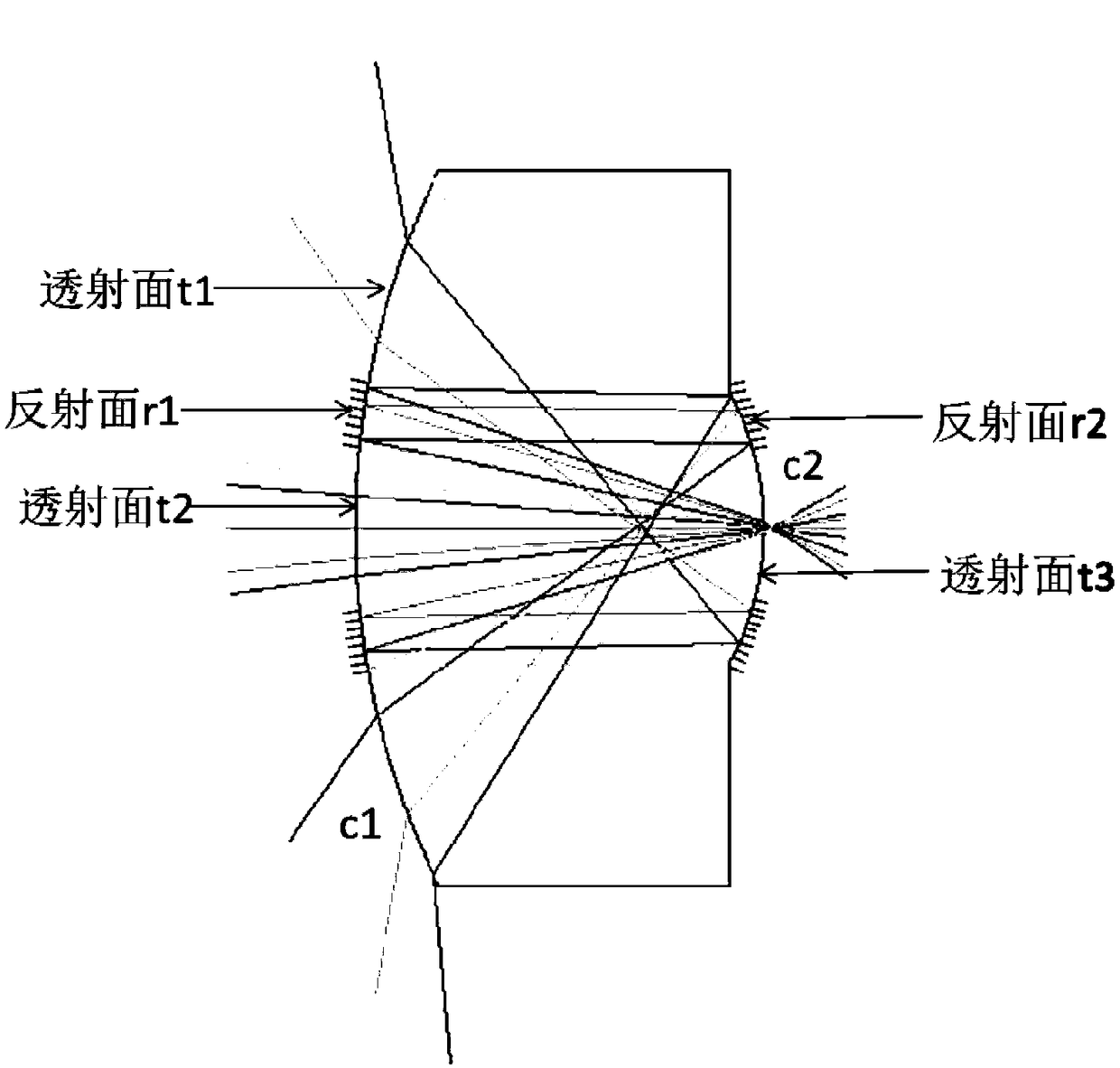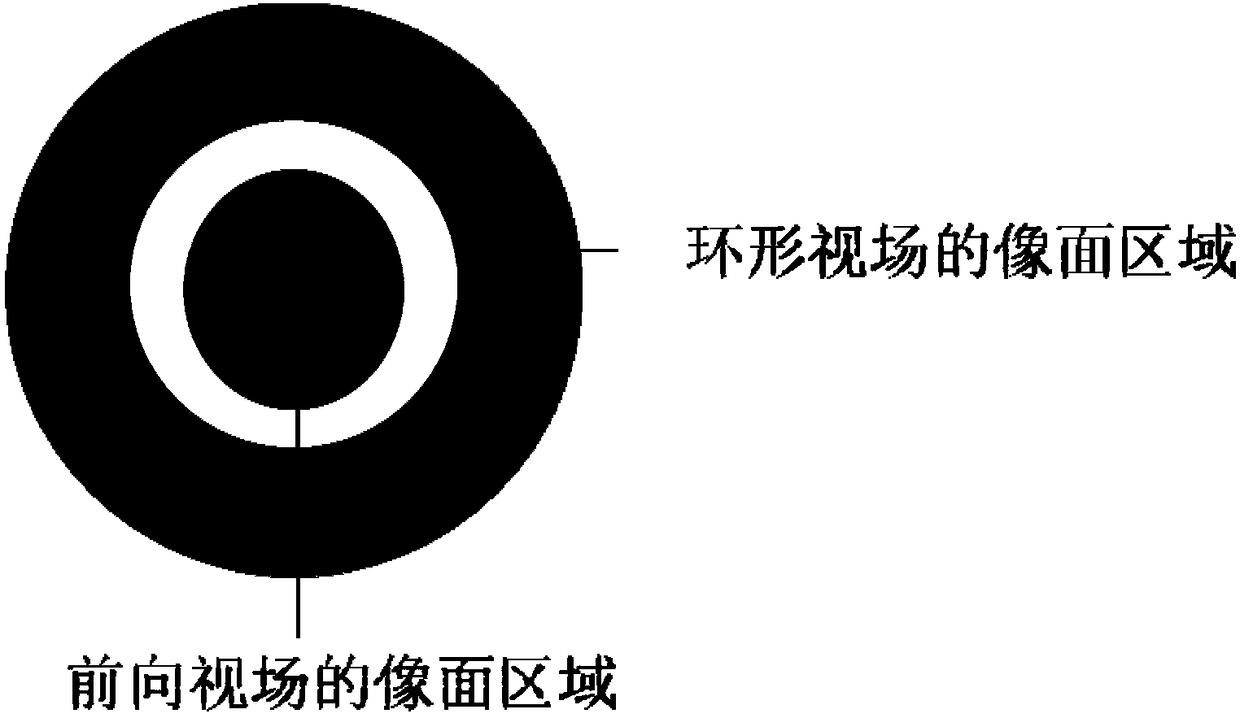No-blind-point catadioptric panoramic imager
A panoramic imaging and switchback technology, applied in the field of panoramic detection, can solve the problems of restricting the use and development of switchback panoramic lenses
- Summary
- Abstract
- Description
- Claims
- Application Information
AI Technical Summary
Problems solved by technology
Method used
Image
Examples
Embodiment Construction
[0027] In order to make the object, technical solution and advantages of the present invention clearer, the present invention will be further described in detail below in conjunction with the accompanying drawings and specific embodiments. It should be understood that the specific embodiments described here are only used to explain the present invention, but not to limit the present invention.
[0028] figure 1 The optical system of the blind-spot-free reentrant panoramic imager according to the embodiment of the present invention is shown. The optical system is composed of a front lens group 1, an annular folding mirror 2, a subsequent lens group 3 and an image plane detector 4.
[0029] The panoramic imager has two fields of view, a forward field of view and a circular field of view. In order to make the panoramic imager have no observation blind spots, the maximum half angle of field of view of the panoramic imager is equal to the minimum half angle of field of view of th...
PUM
 Login to View More
Login to View More Abstract
Description
Claims
Application Information
 Login to View More
Login to View More - R&D
- Intellectual Property
- Life Sciences
- Materials
- Tech Scout
- Unparalleled Data Quality
- Higher Quality Content
- 60% Fewer Hallucinations
Browse by: Latest US Patents, China's latest patents, Technical Efficacy Thesaurus, Application Domain, Technology Topic, Popular Technical Reports.
© 2025 PatSnap. All rights reserved.Legal|Privacy policy|Modern Slavery Act Transparency Statement|Sitemap|About US| Contact US: help@patsnap.com



